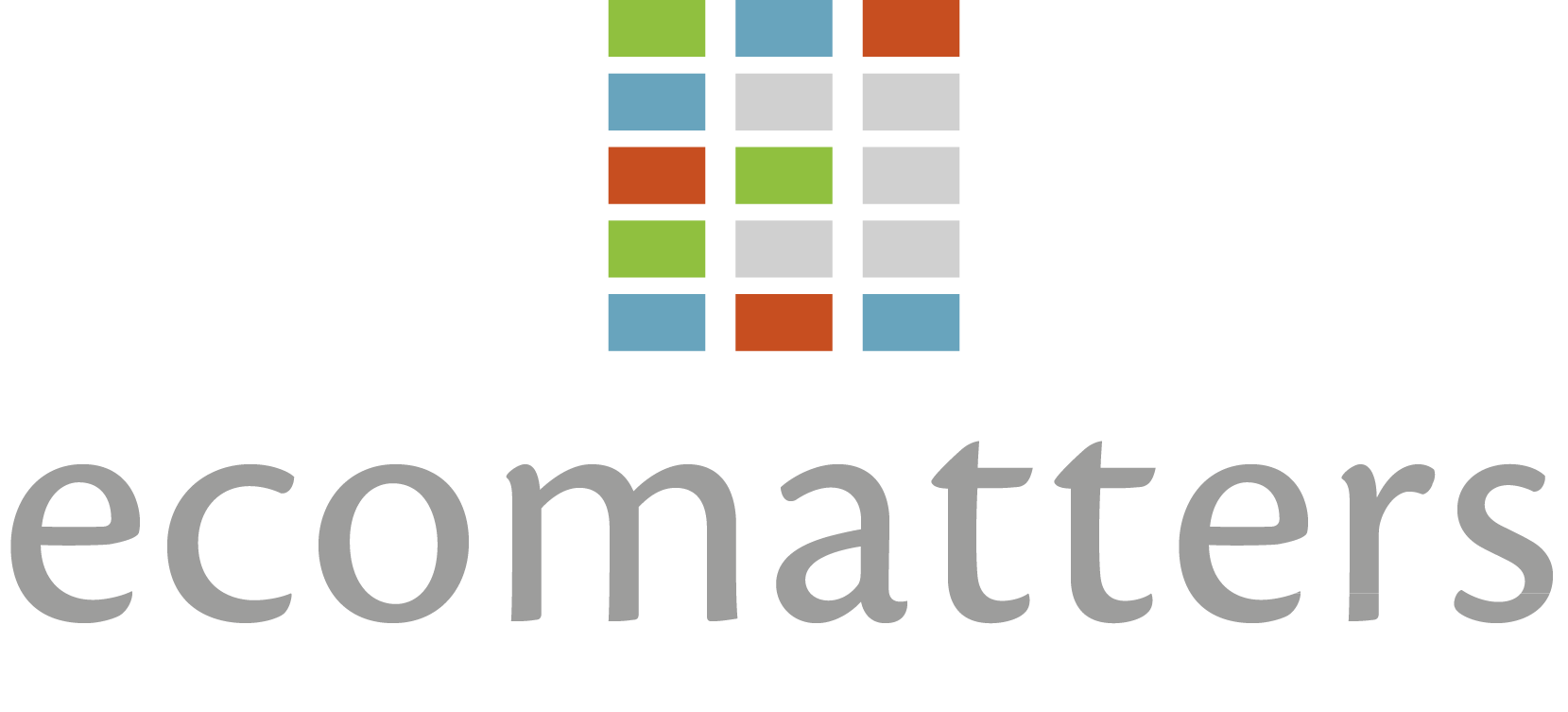Sustainability Reporting
Globally, businesses are paying more attention to reporting on their sustainability performance. At Ecomatters we have a wealth of experience in supporting companies turn sustainability goals into measurable impact. Our strategic advice, target-setting, and reporting services ensure that your sustainability reporting meets regulatory requirements as well as your corporate objectives.
We support our clients with:
- Design and implementation of corporate sustainability reporting systems, including strategy development and target setting (Science-Based Targets).
- Development of customised data collection systems, including tools and manuals.
- Support in the review or audit process of sustainability reporting as part of the annual report or Carbon Disclosure Project.
- Help you calculate carbon emissions under your direct control (scope 1 emissions) as well as your organisation’s indirect (scope 2 and 3) emissions using the Greenhouse Gas Protocol or ISO 14064-1.
Our reporting experience:
We are experienced in sustainability reporting using the following standards and frameworks:
- Corporate Sustainability Reporting Directive (CSRD) using the European Sustainability Reporting Standards (ESRS).
- The Voluntary standard for non-listed micro-, small- and medium-sized undertaking (VSME) standards.
- Global Reporting Initiative (GRI) standards.
- Carbon Disclosure Project (CDP) guidelines.

Sustainability reporting helps companies to communicate their multifaceted environmental, social and governance value
Sustainability Reporting - Why It Matters
Businesses around the world are placing greater emphasis on reporting their sustainability performance—especially in relation to Environmental, Social, and Governance (ESG) aspects. This growing focus is largely driven by increasing pressure from investors, regulators, and consumers who expect transparency and accountability in ESG practices.
Sustainability reporting allows companies to communicate their broader societal value, benchmark their performance, and develop long-term ESG strategies. Ultimately, it helps organisations mitigate negative impacts and enhance positive contributions to society and the environment.
Evolving practices in ESG Reporting
Traditionally, companies have shared their ESG performance through annual sustainability report (Corporate Sustainability Reporting, CSR). However, more organisations are now adopting integrated reporting, where non-financial performance is included alongside financial results in their annual reports. This approach reflects the growing recognition that sustainability is core to long-term business success.
Before selecting what and how to report, companies should clarify several key questions:
- What is the objective of your sustainability report?
- Which issues are most relevant to your stakeholders?
- What legal or regulatory requirements apply?
- Where are your company’s most significant ESG impacts?
- What resources are available for data collection and reporting?
Answering these questions helps define reporting priorities and identify the most appropriate frameworks and indicators.
Choosing the right framework
The choice of reporting framework shapes the structure, content, and depth of your ESG disclosures. It determines how material topics are defined and prioritised, what metrics are required, and how year-on-year progress is communicated. Aligning with a recognised standard, such as GRI, ESRS, or CDP, not only ensures consistency and comparability but also enhances the credibility of your reporting.
Conducting a materiality assessment
A crucial part of the reporting process is the materiality assessment. This helps companies identify the ESG topics that matter most to both the business and its stakeholders. It considers both actual and potential impacts on people and the planet, as well as the influence of these issues on business performance.
Materiality assessments should involve stakeholder engagement, internal consultations, and strategic review. The outcome guides organisations to focus making reporting more relevant, targeted, and effective.
A risk and opportunity assessment analyses how ESG-related developments—such as new regulations, climate events, or changing consumer expectations—may influence a company’s operations, supply chains, business model, and financial performance. This proactive approach enables organisations to anticipate challenges and take advantage of emerging opportunities. An impact assessment adds another valuable perspective by evaluating how a company’s activities, products, or services affect environmental and social systems.
When these two assessments are conducted together as part of a materiality process, it is referred to as a double materiality assessment. However, it is also possible to perform them as separate, stand-alone evaluations.
These assessments provide a solid foundation for setting targets, defining key performance indicators (KPIs), and putting in place mechanisms to monitor and improve performance over time.
Measuring carbon footprint and setting targets
While ESG goals are often industry-specific, one common focus is a company’s carbon footprint. Measuring emissions is a practical starting point for assessing environmental impact and setting reduction targets, including Science-Based Targets (SBTs). Carbon footprint calculations are also critical for complying with various sustainability reporting standards such as ESRS, VSME, GRI, or for participating in CDP.
Data collection and validation
Accurate and reliable data is the foundation of credible sustainability reporting. This includes both:
- Quantitative data (e.g., energy use, greenhouse gas emissions, water consumption, workforce diversity).
- Qualitative information (e.g., policies, governance structures, stakeholder engagement).
Data should be collected from trusted internal systems and validated for consistency, completeness, and traceability. Where estimates or external sources are used, any limitations should be clearly disclosed.
Once validated, the data is mapped to the selected reporting framework, ensuring that disclosures are aligned with regulatory expectations and stakeholder needs. A structured, transparent approach enables companies to track progress, identify performance gaps, and clearly communicate their sustainability journey.
Illustrated Projects
The range of projects for a diverse set of clients illustrates the vast experience we have with sustainability reporting






